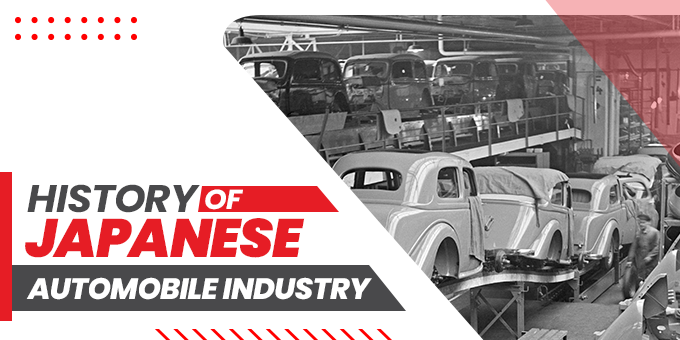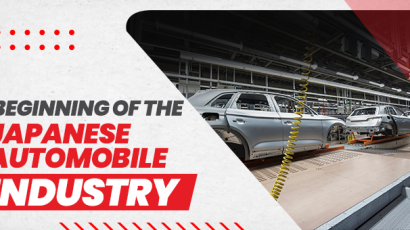
Globally, Japan’s automotive sector is ranked as the third-largest producer. The country is home to 78 factories and employs over 5.5 million people.
The sector is greatly contributing to the economy of the country. The industry is highly innovative and technology-driven. The domestic brands include Suzuki, Toyota, Mitsubishi, Honda, and Nissan. These are dominating the market.
The industrial histories are often boring. However, people are always eager to find out how Japan turned into an automobile giant. Today, Japanese new and used cars are preferred globally.
If you also want to know the history of the Japanese automotive industry, you can continue reading. We have added some dates as well as some interesting facts.
Here you can read all about the industry.
The History
In 1899, Japan imported its first automobile. They started manufacturing vehicles in 1902. Public transport and commercial vehicles were found on the roads after this. The first entirely locally made car was launched in 1907.
From 1930 to 1945, Japan became home to many American car manufacturers. They produced over 20,000 units in a year. The domestic manufacturers produced less than 500 units. The difference was a result of the availability of resources.
In 1935, the country focused on industrialization. Around 16 car manufacturers found their way into the country. The Government of Japan also supported them. The Automobile Manufacturing Industries Act helped in promoting fair competition in the market.
Then, American producers faced a tough time in Japan. Under this act, Toyota and Datsun were formed. Later, in 1955, Suzuki started its production. It was followed by many other companies.
In the 1960s, private vehicle ownership became common. From 1965 to 1975, it was seen that the industry reached new heights. The Japanese Automotive Manufacturer’s Association was developed in 1967. It provided manufacturers with the opportunity to lead and grow.
In the early 1970s, the industry realized the need for automation in production. Technology is supporting industries since the beginning. Using advanced digital technologies and robotics, the manufacturers brought revolutionary changes to the market.
In the mid-1960s and 1970, car sales exploded. By 1962, 14% of the household had vehicles.
The percentage increased to more than 50% by 1975. As the economic situation improved, more and more people bought vehicles. Innovative ideas and advanced technology played a significant role.
After the oil crisis of 1973, it was observed that fuel-efficient cars were highly demanded. At this time, Japan was in a good position to grow and internationalize. It designed new vehicles based on fuel efficiency. Entering the global market helped in reaching more segments.
By now, the industry was producing lightweight cars. They took advantage of innovative material. Later, in 1985, the operations enhanced further. The Japanese Automotive Industry was recognized around the world.
Till 2000, the registered vehicles reached over 52 million. With time, it was found that the industry evolved. The growth was rapid. In 2006, it was surpassed
Since 2012, the Japanese local auto production is increasing steadily. The major automakers have expanded internationally.
With time, industrial growth was influenced by the power of product development. The industry-focused on changing market trends and developments in consumer needs. The vehicles were designed, manufactured, and marketed accordingly.
Three factors that contributed to the growth of the Japanese automobile industry include:
- Economic development
- Changing needs of the local market
- The emergence of a domestic automotive industry
In the modern world, the Japanese used cars have also gained attention. These are reliable and durable. The manufacturers export vehicles. Many used vehicles are also exported internationally.
Today, Toyota has become a global manufacturer. It is the first company to produce more than 10 million cars in a year. All the domestic manufacturers are known worldwide for producing reliable cars.
The Future of the Japanese Automotive Industry
With time, the industry has undergone various changes and developments. The global pandemic massively influenced the industry.
The demands of people are changing. They are looking for smarter options. Awareness of global issues has increased the demand for renewable, green, and smart technologies.
They have achieved global recognition. The brands are position as high-tech and smart. These are lighter in weight yet tough. The competitive features make the Japanese used cars also high in demand.
Final Thoughts
Japan is one of the leading car-producing nations in the world. It exports vehicles to different countries. Japanese vehicles are reliable, valuable, and high in demand.
The history of the Japanese Automotive Industry reflects the massive growth and development. Many local manufacturers have emerged successfully. Today, Japanese vehicles are preferred in various countries.
The Japanese used cars are also easily available. These are inspected by the dealers before making it available in the market.











